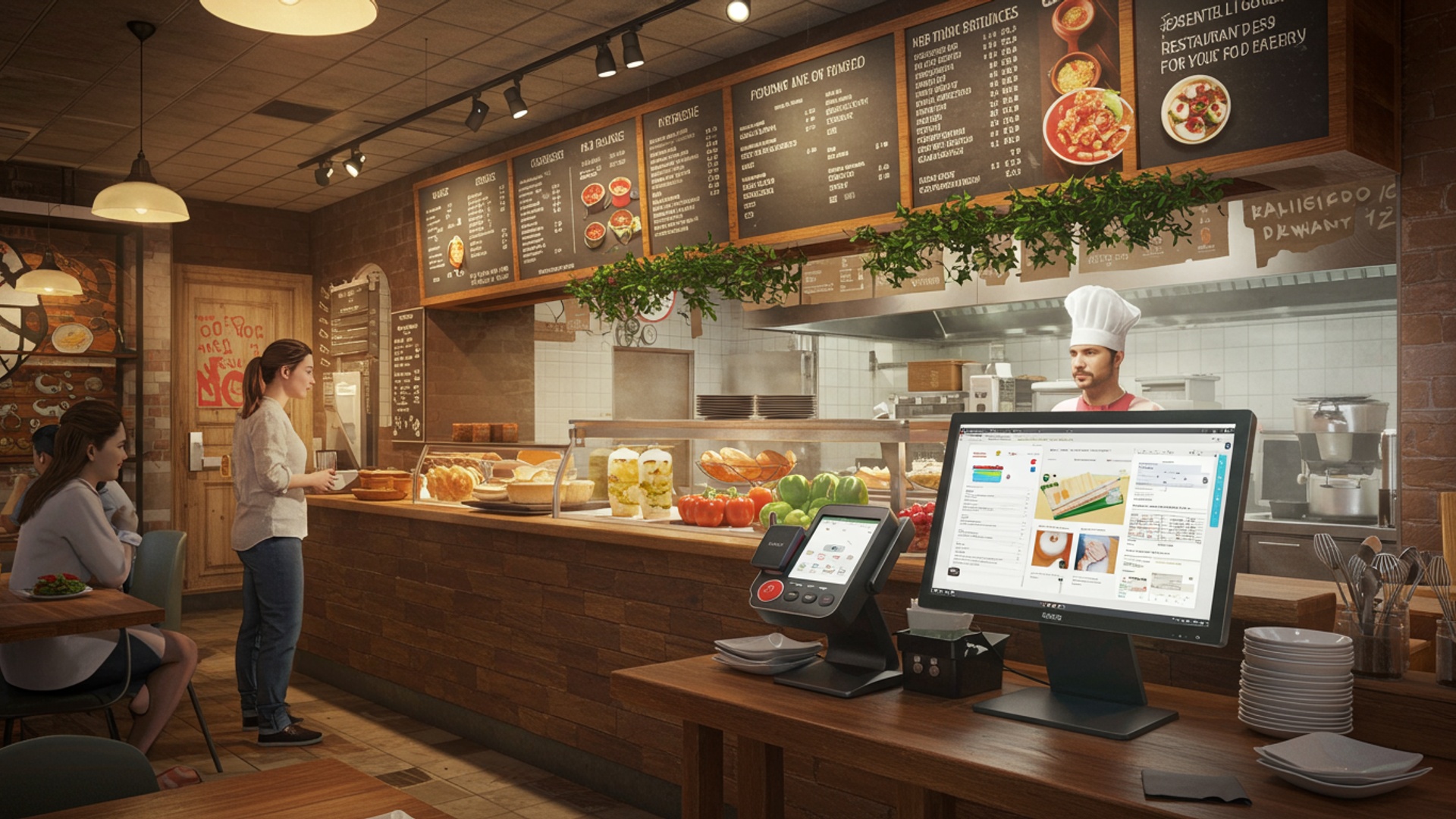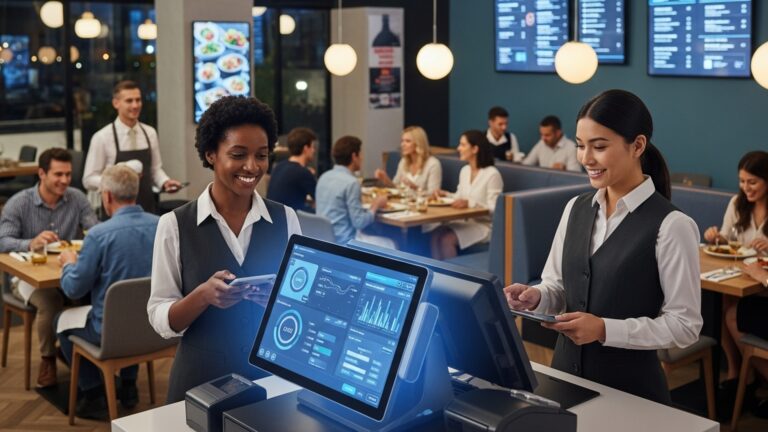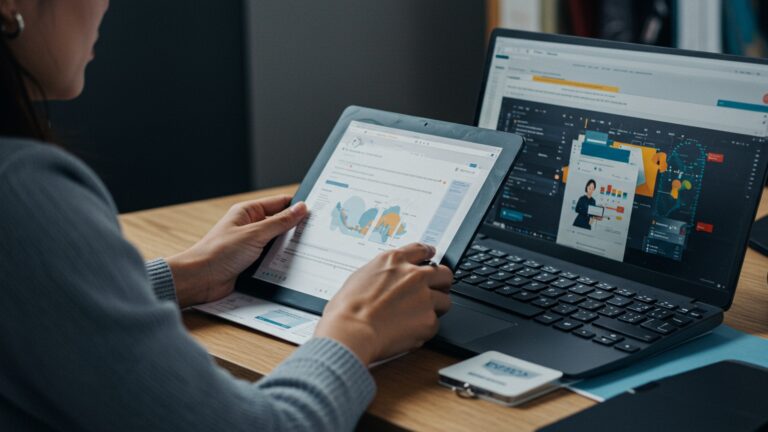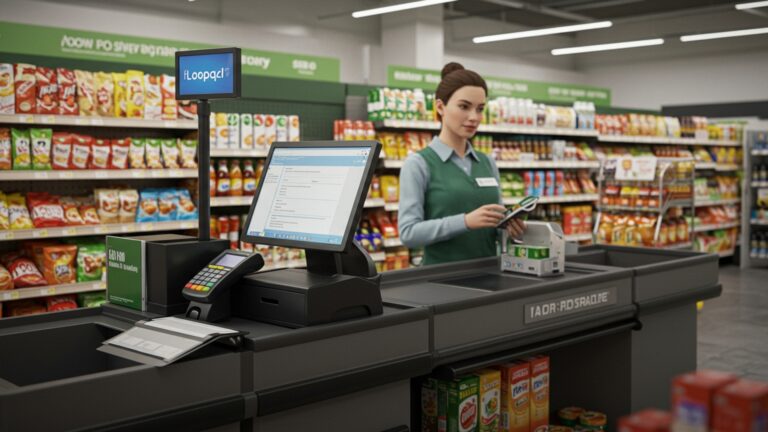Essential Guide How to Pick the Right Restaurant POS Software for Your Eatery
Choosing the optimal restaurant POS software defines an eatery’s operational efficiency and ultimate profitability in today’s dynamic hospitality landscape. Beyond basic transaction processing, modern cloud-based systems now integrate crucial functionalities like real-time inventory management, staff scheduling, online ordering platforms. sophisticated customer relationship management. The right restaurant POS software acts as the digital backbone, facilitating seamless front-of-house operations from table-side ordering tablets to integrated kitchen display systems, while simultaneously providing back-of-house analytics crucial for optimizing menu pricing and reducing waste. Owners navigating options must consider scalability, robust reporting. seamless API integrations with third-party delivery services, ensuring their investment drives efficiency, enhances guest experiences. supports growth amidst evolving consumer demands for contactless payments and personalized service.

Understanding the Core of Restaurant POS Software
In the fast-paced world of culinary arts, efficiency and precision are paramount. Gone are the days of manual order taking, handwritten tickets. clunky cash registers. Today, the modern eatery relies heavily on sophisticated technology. at the heart of this operational evolution lies the restaurant POS software. POS, which stands for Point of Sale, is far more than just a cash register; it’s a comprehensive system designed to streamline every aspect of a restaurant’s operations, from taking orders and processing payments to managing inventory and analyzing sales data.
Essentially, restaurant POS software acts as the central nervous system for your establishment. It integrates various functions that were once handled by disparate systems, providing a unified platform. This includes everything from front-of-house operations like table management and customer service to back-of-house functions such as kitchen communication and supply chain oversight. Its evolution has been driven by the need for greater speed, accuracy. data-driven insights in a highly competitive industry.
Essential Features Your Restaurant POS Software Must Offer
When evaluating potential systems, a core set of features defines truly effective restaurant POS software. These capabilities are non-negotiable for modern eateries aiming for operational excellence and enhanced customer experiences.
- Order Management
- Real-world application: Imagine a busy Friday night. A server can quickly input a complex order with multiple modifications directly at the table using a handheld device, which instantly sends the order to the kitchen display system (KDS) and prints a bar ticket, minimizing errors and wait times.
- Payment Processing
- Inventory Management
- Case Study: A small bistro used to manually track inventory, leading to frequent stock-outs of key ingredients and significant food waste. Implementing restaurant POS software with integrated inventory management allowed them to automate ordering, reduce waste by 15%. ensure consistent menu availability, directly impacting their bottom line.
- Employee Management
- Reporting & Analytics
- Customer Relationship Management (CRM)
This is the bread and butter of any POS. It should facilitate quick and accurate order entry, allow for easy modifications (e. g. , “no onions,” “extra cheese”), split checks effortlessly. manage tables or delivery queues efficiently. Integration with online ordering platforms and third-party delivery services (like Uber Eats or DoorDash) is increasingly vital.
Secure and versatile payment options are crucial. Your restaurant POS software should support EMV chip cards, NFC contactless payments (Apple Pay, Google Pay), gift cards. mobile payment solutions. Robust encryption and PCI DSS compliance are essential for protecting customer data.
Effective inventory control prevents waste and ensures you never run out of popular items. The software should track ingredients in real-time, alert you to low stock levels, help manage vendor relationships. assist with recipe costing.
This feature helps streamline HR tasks. Look for time clock functionality, shift scheduling, payroll integration. the ability to track employee performance. Granular access controls are also crucial, allowing you to define different permission levels for staff members.
Data is power. A robust restaurant POS software provides comprehensive reports on sales trends, peak hours, popular menu items, labor costs. more. Customizable dashboards allow you to visualize key performance indicators (KPIs) at a glance, enabling informed business decisions.
Build loyalty and drive repeat business with integrated CRM tools. This includes managing customer profiles, running loyalty programs, tracking purchase history. facilitating targeted marketing campaigns.
Deployment Models: Cloud-Based vs. On-Premise Restaurant POS Software
A fundamental decision when choosing restaurant POS software is selecting its deployment model. This choice significantly impacts cost, accessibility, maintenance. scalability.
In this model, the software and data are hosted on remote servers managed by the POS vendor. You access the system via the internet, typically through a web browser or an app on a tablet/smartphone. Updates and maintenance are handled by the vendor.
With an on-premise system, the software is installed directly on your restaurant’s hardware (servers, terminals) and your data is stored locally. You are responsible for maintenance, updates. data security.
Here’s a comparison to help you weigh your options:
| Feature | Cloud-Based Restaurant POS Software | On-Premise Restaurant POS Software |
|---|---|---|
| Initial Cost | Lower (subscription model, minimal hardware investment) | Higher (upfront software license, server hardware) |
| Ongoing Costs | Monthly/annual subscription fees | Maintenance, IT support, update fees, potential hardware upgrades |
| Accessibility | Anywhere with internet access (e. g. , manage from home, multiple locations) | Limited to your physical location (unless remote access is configured) |
| Maintenance & Updates | Handled by vendor automatically | Your responsibility (requires IT staff/consultant) |
| Data Security | Managed by vendor (often with professional-grade security) | Your responsibility (requires robust internal security protocols) |
| Scalability | Easily scalable (add terminals, locations with subscription adjustment) | Can be complex and costly to scale (requires additional hardware/licenses) |
| Offline Capability | Typically has an offline mode for continued operation during internet outages, syncing when connectivity returns. | Operates continuously without internet. external integrations may be affected. |
For most modern restaurants, especially those with multiple locations or a desire for remote management, cloud-based restaurant POS software is often the preferred choice due to its flexibility, lower upfront costs. ease of maintenance. But, establishments with unique security requirements or those in areas with unreliable internet might still consider on-premise solutions.
Integration Capabilities: The Ecosystem Approach for Your Restaurant POS Software
A truly powerful restaurant POS software doesn’t operate in isolation; it integrates seamlessly with other essential business tools, forming a cohesive operational ecosystem. This interconnectedness is vital for avoiding manual data entry, reducing errors. providing a holistic view of your business.
Key integrations to look for include:
- Online Ordering & Delivery Platforms
- Accounting Software
- Reservation Systems
- Kitchen Display Systems (KDS)
- Loyalty & Marketing Programs
- Payroll Services
Direct integration with services like DoorDash, Uber Eats, Grubhub, or your own proprietary online ordering system funnels orders directly into your POS, streamlining the process and preventing missed orders.
Connecting with platforms like QuickBooks, Xero, or Sage automatically transfers sales data, payroll insights. inventory costs, simplifying bookkeeping and financial reporting. This saves countless hours of manual data entry and reduces the risk of errors.
For fine dining or high-volume restaurants, integration with reservation platforms (e. g. , OpenTable, Resy) allows for better table management and customer flow.
A KDS receives orders directly from the POS and displays them digitally in the kitchen, enhancing communication, reducing paper waste. speeding up order preparation.
Seamless integration ensures customer loyalty points are tracked automatically. marketing campaigns can be triggered based on purchase history or specific customer segments.
Direct integration with payroll providers can automate employee hours tracking and transfer, simplifying payroll processing.
When evaluating integration capabilities, ask vendors about their Application Programming Interface (API). An open API indicates flexibility and the potential to connect with a wider range of third-party tools, even custom solutions. For example, a simple API call might look like this (conceptual):
GET /api/v1/orders? status=pending&locationId=123
POST /api/v1/orders/{orderId}/status? newStatus=completed
This technical flexibility means your restaurant POS software can truly adapt to your unique operational needs and future growth.
Hardware Considerations for Your Restaurant POS Software
While the software is the brain, the hardware is the body of your POS system. The right hardware ensures smooth operations, durability. a positive user experience. Compatibility with your chosen restaurant POS software is paramount.
- POS Terminals
- Printers
- Cash Drawers
- Card Readers
- Kitchen Display Systems (KDS) Screens
- Barcode Scanners
These can range from traditional touchscreen monitors to iPads or Android tablets. Consider screen size, durability (especially in a busy kitchen or bar environment). ease of use. Handheld devices are excellent for tableside ordering and payment.
Thermal receipt printers are standard for customer receipts, while kitchen printers (often impact printers for durability in hot environments) are used for order tickets. Wireless options can reduce clutter.
While digital payments are on the rise, a secure cash drawer is still essential for handling cash transactions.
Ensure compatibility with EMV chip cards, NFC contactless payments. magnetic stripe cards. Modern readers often integrate directly with the terminal.
These durable screens replace paper tickets in the kitchen, improving communication and order flow. They should be robust enough to withstand spills and heat.
Useful for quick entry of retail items (e. g. , bottled beverages, merchandise) if your restaurant offers them.
When selecting hardware, always prioritize durability, especially in a restaurant environment prone to spills and heavy use. Discuss recommended hardware with your restaurant POS software vendor to ensure full compatibility and optimal performance. Some vendors offer proprietary hardware bundles, which can simplify setup and support.
Scalability and Future-Proofing Your Restaurant POS Software
Your restaurant isn’t static; it will grow, evolve. adapt. Your restaurant POS software must be able to grow with it. Investing in a scalable solution from the outset avoids costly and disruptive migrations down the line.
- Multi-Location Support
- Feature Expansion
- API Flexibility
- User Capacity
If you envision opening additional branches, ensure the software can easily manage multiple locations from a central dashboard. This includes consolidated reporting, shared inventory management. consistent menu deployment across all sites.
As your business needs change, will the POS vendor offer new modules or features? Look for a vendor with a clear roadmap for development and a history of rolling out valuable updates. Can you easily add online ordering, loyalty programs, or catering modules as your business expands?
As discussed, an open and well-documented API allows your system to connect with new technologies or custom solutions that might emerge in the future, ensuring your POS remains adaptable.
Ensure the system can handle an increasing number of users (servers, kitchen staff, managers) and transactions without performance degradation. Cloud-based systems generally excel here due to their elastic infrastructure.
Future-proofing your restaurant POS software means choosing a partner, not just a product. Research the vendor’s financial stability, customer retention rates. commitment to innovation.
Security and Compliance with Restaurant POS Software
In an era of increasing cyber threats and stringent data privacy regulations, the security of your restaurant POS software and the sensitive data it handles is paramount. Protecting your customers’ financial insights and your business’s proprietary data is not just good practice – it’s a legal and ethical imperative.
- PCI DSS Compliance
- Data Encryption
- User Access Controls
- Regular Backups & Disaster Recovery
- Fraud Prevention
For any business that accepts credit card payments, adherence to the Payment Card Industry Data Security Standard (PCI DSS) is non-negotiable. Your restaurant POS software and its payment processing components must be PCI compliant. This ensures that cardholder data is handled, processed. stored securely, minimizing the risk of data breaches. Always ask vendors for their PCI compliance certifications.
All sensitive data, both in transit (e. g. , when sending orders to the kitchen) and at rest (e. g. , customer insights stored on servers), should be encrypted. This protects against unauthorized access even if a system is compromised.
Implement granular access levels, ensuring that employees only have access to the insights and functions necessary for their roles. For instance, a server shouldn’t have access to payroll data. a kitchen staff member shouldn’t be able to process refunds.
For cloud-based systems, verify that the vendor performs regular, redundant backups and has a robust disaster recovery plan. For on-premise systems, this responsibility falls to you, requiring a clear strategy for data backup and restoration.
Look for features that help detect and prevent fraud, such as suspicious transaction alerts, void tracking. robust reporting on discounts and comps.
Choosing a restaurant POS software provider with a strong commitment to security and a transparent approach to data handling will safeguard your business and build customer trust.
Support and Training for Your Restaurant POS Software
Even the most advanced restaurant POS software is only as good as your team’s ability to use it effectively. Comprehensive support and training are critical for a smooth implementation and ongoing operational success.
- Customer Support Availability
- Onboarding and Training Resources
- User-Friendly Interface
- Community and Documentation
Restaurants operate outside of typical 9-to-5 hours. Look for 24/7/365 support via multiple channels (phone, chat, email). What are their typical response times? Are there dedicated account managers?
How does the vendor help you get started? Do they offer on-site training, online tutorials, video guides, or a knowledge base? Is the training included in the cost or an additional fee?
While training is vital, an intuitive and easy-to-learn interface reduces the learning curve for staff turnover. Simple, logical workflows minimize errors and speed up service.
A strong user community or comprehensive online documentation can be invaluable for troubleshooting minor issues or discovering advanced features without needing to contact support.
A vendor that invests heavily in customer success through robust support and training demonstrates a commitment to your long-term partnership.
Cost Analysis: Beyond the Sticker Price of Restaurant POS Software
Understanding the true cost of restaurant POS software requires looking beyond the initial price tag. Many hidden or recurring fees can significantly impact your total cost of ownership (TCO).
- Initial Setup Costs
- Hardware
- Software License/Installation
- Installation & Cabling
- Monthly/Annual Subscription Fees
- Payment Processing Fees
- Interchange Plus
- Tiered Pricing
- Flat Rate
- Add-on Module Costs
- Training and Support Costs
- Hidden Fees to Watch Out For
- PCI Compliance Fees
- Gateway Fees
- Early Termination Fees
- Statement Fees
Cost of terminals, printers, cash drawers, card readers, KDS screens. Some vendors offer bundles, others require you to purchase separately.
For on-premise systems, this is a one-time fee. For cloud systems, there might be an initial setup fee, though often minimal.
Professional installation may be required, especially for complex setups.
For cloud-based restaurant POS software, this is the primary ongoing cost. Fees often vary based on the number of terminals, locations, or specific feature tiers.
These are often the largest ongoing cost. interpret the fee structure:
A transparent model where you pay the direct interchange fee (set by card networks) plus a small markup from the processor.
Less transparent; transactions are grouped into qualified, mid-qualified. non-qualified tiers, each with different rates. This can lead to higher costs.
A single percentage for all transactions, often easier to budget for but can be more expensive for high-volume businesses.
Always compare effective rates (total processing fees divided by total sales volume) across different processors.
Many systems offer a basic package, with advanced features (e. g. , advanced inventory, loyalty programs, specific integrations) available as paid add-ons. Factor these into your budget if you need them.
While some basic training is often included, extensive or on-site training might incur additional fees. Ongoing premium support packages can also be extra.
Some processors charge a monthly or annual fee for PCI compliance, even if you are compliant.
For online transactions, a payment gateway fee might be charged.
Be wary of long-term contracts with hefty penalties for early cancellation.
Small monthly fees for processing statements.
Request a detailed, itemized quote from each vendor, breaking down all potential costs. Don’t hesitate to negotiate, especially on processing rates and subscription tiers.
Actionable Steps: How to Evaluate and Choose the Right Restaurant POS Software
Selecting the ideal restaurant POS software is a significant decision that requires a structured approach. Follow these actionable steps to make an informed choice:
- Define Your Specific Needs and Priorities
- What kind of restaurant do you operate (quick-service, fine dining, bar, food truck)?
- What are your biggest pain points with your current system (or lack thereof)?
- Which features are absolutely essential (e. g. , online ordering, inventory, table management)?
- What is your budget for initial setup and ongoing costs?
- How many terminals and locations do you need to support?
- Research Potential Vendors
- Start by researching well-known and reputable restaurant POS software providers in the industry (e. g. , Toast, Square for Restaurants, Clover, Lightspeed, Revel Systems).
- Read independent reviews from other restaurant owners on platforms like Capterra, G2, or Restaurant Business Online.
- Consult industry publications and expert analyses.
- Request Demos and Free Trials
- Don’t rely solely on marketing materials. Schedule live demonstrations with your top 2-3 choices.
- During the demo, ask specific questions related to your defined needs. Have your managers and key staff present to provide feedback.
- If available, take advantage of free trials to test the software in a real-world (or simulated) environment. Pay attention to ease of use, stability. workflow.
- Talk to Other Restaurant Owners
- Reach out to colleagues or network with other restaurateurs in your area. Ask about their experiences with different restaurant POS software systems.
- Inquire about customer support, reliability. how the system has impacted their operations.
- comprehend Contracts and Pricing
- Get a detailed, itemized quote that includes all hardware, software, processing. support fees.
- Read the contract carefully, paying close attention to terms of service, cancellation policies. data ownership clauses.
- Negotiate where possible, especially on payment processing rates and subscription tiers.
- Plan for Implementation and Training
- Once you’ve made a choice, work with the vendor to develop a clear implementation timeline.
- Ensure comprehensive training for all staff members, from front-of-house to back-of-house. Proper training is critical for user adoption and maximizing the return on your investment in new restaurant POS software.
Actionable Takeaway: Create a checklist of “must-have” and “nice-to-have” features based on your unique operational requirements.
Actionable Takeaway: Prepare a list of questions beforehand and have your staff test common scenarios (e. g. , splitting a check, adding a modifier, processing a return).
Actionable Takeaway: Personal testimonials can provide invaluable insights that sales pitches won’t.
Actionable Takeaway: Don’t be afraid to ask for clarification on any ambiguous terms. A transparent vendor is a trustworthy vendor.
Actionable Takeaway: Allocate sufficient time and resources for staff training; it’s a critical component of successful POS deployment.
Conclusion
Choosing the right restaurant POS software isn’t merely a purchase; it’s a strategic investment in your eatery’s future. You’ve learned that it’s crucial to align features like real-time inventory for popular dishes, seamless online ordering integration. efficient table management with your unique operational flow. Forget generic solutions; focus on how a system specifically addresses your pain points, perhaps even offering AI-driven insights to optimize your menu or staffing during peak hours. My personal tip? Always insist on a hands-on trial and involve your front-of-house and kitchen staff in the testing. Their daily interactions will uncover practical nuances no sales demo can. With the rise of cloud-based solutions and integrated contactless payments becoming standard, ensure your choice is scalable and secure. Embrace this decision as an opportunity to truly empower your team and elevate your customer experience, transforming your operations from merely functional to truly exceptional.
More Articles
Boost Restaurant Efficiency A Guide to Choosing Restaurant POS Software
Why Cloud Based POS Software is Your Business Future Learn How to Adopt It
How to Choose the Best Billing and POS Software for Your Business Needs
Simplify Your Billing Process How to Choose POS Billing Software Solutions
Master Mobile POS Software Essential Guide for On-the-Go Business Operations
FAQs
So, what exactly is this “restaurant POS software” everyone talks about?
It’s the central nervous system for your eatery! It handles everything from taking customer orders and processing payments to managing inventory, tracking sales. even helping with staff scheduling. Think of it as an upgraded, smart cash register that does a whole lot more to streamline your operations and make things run smoother.
Why do I need special POS software for my restaurant instead of just a regular system?
Regular systems are okay for simple retail. restaurants have unique, complex needs. You’re dealing with table management, kitchen order routing, splitting checks, managing menu items with endless modifiers (like ‘no onions’ or ‘extra cheese’). often integrated delivery or online ordering. Restaurant-specific POS software is designed to handle all these fast-paced demands efficiently, reducing errors and speeding up service in a way a generic system just can’t.
What essential features should I prioritize when looking for new POS software?
Definitely look for robust order management (for table service, takeout, delivery), intuitive payment processing, real-time inventory tracking. detailed sales reporting. Kitchen display systems (KDS) or printer integration are crucial. Also, consider customer relationship management (CRM) features, employee management (time clock, permissions). seamless integration with any online ordering platforms or accounting software you already use.
How much does restaurant POS software usually cost?
It really varies quite a bit! You might find options ranging from free basic versions (often with transaction fees) to hundreds of dollars per month for advanced, feature-rich systems. Costs usually depend on the features included, the number of terminals you need. whether it’s a subscription (SaaS) or an upfront purchase. Don’t forget to factor in hardware costs too, like terminals, printers. card readers.
Is it tough to train staff on new POS software, or is it pretty straightforward?
Good restaurant POS software should be designed with ease of use in mind. Look for systems with intuitive interfaces and clear, logical workflows. While there’s always a learning curve with anything new, a user-friendly system, coupled with good training resources from the vendor, can get your staff up to speed quickly, minimizing disruption during busy shifts. The goal is to make it easy enough for a new hire to pick up quickly.
Cloud-based vs. on-premise: What’s the deal. which one is generally better?
Cloud-based means the software lives online and you access it via the internet; your data is stored remotely. On-premise means the software and data are installed directly on computers at your restaurant. Cloud systems offer more flexibility, lower upfront costs, automatic updates. remote access, which is often preferred today. On-premise gives you more direct control over your data but requires more IT maintenance. For most modern eateries, cloud-based is usually the more practical and future-proof choice.
How can I be sure I’m picking the right POS for my specific type of restaurant?
Start by listing your unique needs. Are you a fast-casual spot, a fine dining establishment, or a bustling bar? Do you do a lot of takeout, delivery, or tableside ordering? Consider your budget, the number of staff. any existing systems you need to integrate with. Request demos from a few top contenders, read reviews from similar businesses. don’t hesitate to ask about scalability and customer support. The ‘right’ one will align perfectly with your operational flow and help you grow without unnecessary headaches.





